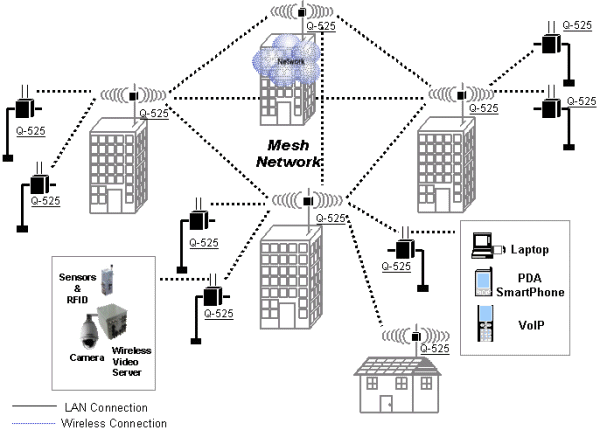
RFID
Radio Frequency IDentification (RFID) is a method of storing and remotely retrieving data using devices called RFID tags or transponders. An RFID tag is a small object that can be attached to or incorporated into a product, animal, or person. RFID tags contain antennas to enable them to receive and respond to radio-frequency queries from an RFID transceiver. Passive tags require no internal power source, whereas active tags require a power source.
RFID tags can be either active or passive.
Passive RFID tags have no internal power supply. The minute electrical current induced in the antenna by the incoming radio frequency signal provides just enough power for the tag to transmit a response. Due to limited power and cost, the response of a passive RFID tag is brief — typically just an ID number (GUID). Lack of an onboard power supply means that the device can be quite small: commercially available products exist that can be embedded under the skin. As of 2005, the smallest such devices commercially available measured 0.4 mm × 0.4 mm, which is thinner than a sheet of paper; such devices are practically invisible. Passive tags have practical read distances ranging from about 10 mm up to about 6 metres.
Active RFID tags, on the other hand, have an internal power source, and may have longer range and larger memories than passive tags, as well as the ability to store additional information sent by the transceiver. At present, the smallest active tags are about the size of a coin. Many active tags have practical ranges of tens of metres, and a battery life of up to 10 years.
Because passive tags are cheaper to manufacture and have no battery, the majority of RFID tags in existence are of the passive variety. As of 2004, these tags cost from US$0.40 at high volumes. Universal RFID tagging of individual products will become commercially viable at very large volumes of 10 billion units per year, driving production cost to less than US$0.05 according to one manufacturer. Current demand for RFID integrated circuit chips is not close to supporting that price. Analysts from independent research companies Gartner and Forrester Research agree that a price less than $0.10 (production volume of one billion units) is achievable in 6–8 years, thus limiting near-term prospects for widespread adoption of passive RFID. Other analysts believe such prices are achievable within 10-15 years.
While the cost advantages of passive tags over active tags are significant, other factors including accuracy, performance in certain environments such as around water or metal, and reliability make the use of active tags very common today.
There are four different kinds of tags commonly in use. They are categorized by their radio frequency: low frequency tags (125 or 134.2 kHz), high frequency tags (13.56 MHz), UHF tags (868 to 956 MHz), and microwave tags (2.45 GHz). UHF tags cannot be used globally as there aren't any global regulations for their usage.
There are some transponder devices and contactless chip cards which deliver a similar function.
RFID System
An RFID system may consist of several components: tags, tag readers, edge servers, middleware, and application software.
The purpose of an RFID system is to enable data to be transmitted by a mobile device, called a tag, which is read by an RFID reader and processed according to the needs of a particular application. The data transmitted by the tag may provide identification or location information, or specifics about the product tagged, such as price, color, date of purchase, etc. The use of RFID in tracking and access applications first appeared during the 1980s. RFID quickly gained attention because of its ability to track moving objects. As the technology is refined, more pervasive and possibly invasive uses for RFID tags are in the works.
In a typical RFID system, individual objects are equipped with a small, inexpensive tag. The tag contains a transponder with a digital memory chip that is given a unique electronic product code. The interrogator, an antenna packaged with a transceiver and decoder, emits a signal activating the RFID tag so it can read and write data to it. When an RFID tag passes through the electromagnetic zone, it detects the reader's activation signal. The reader decodes the data encoded in the tag's integrated circuit (silicon chip) and the data is passed to the host computer for processing.
Take the example of books in a library. Security gates can detect whether or not a book has been properly checked out of the library. When users return items, the security bit is re-set and the item record in the Integrated Library System is automatically updated. In some RFID solutions a return receipt can be generated. At this point, materials can be roughly sorted into bins by the return equipment. Inventory wands provide a finer detail of sorting. This tool can be used to put books into shelf-ready order.
Current Applications of RFID technology in WiFi Network
The following applications are known or projected:
